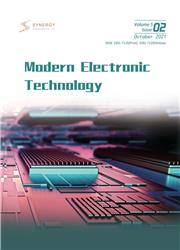Investigation of the Impact of Calcinations Temperature on the Properties of Ba Doped HfO2 Nano-rods
引用次数: 0
Abstract
Barium doped hafnium oxide nanoparticles were synthesized by an easy co-precipitation method. FTIR analysis and EDX investigation shows the purity and stoichiometric composition of hafnium oxide nanoparticles. XRD investigation exhibit the as synthesized nanoparticles are amorphous in nature and calcined barium doped hafnium oxide nanoparticles have the monoclinic phase structure with the mean crystallite size was around 15 nm. TEM analysis shows the development of crystalline Nano-rods. The Nano-rod formations signify the possibility of its use in applications of sensor. Ultra violet visible spectroscopy investigation shows that the band gap of the nanoparticles is noticed between 5.4 -5.14 eV. The visible and NIR of barium doped hafnium oxide nanoparticles indicated high reflectance, which may possibly be employ as an antireflection coating in solar cells applications and high absorbance ultra violet region signify the viability of make use of the prepared nanoparticles could be used in Opto-electronic device applications.煅烧温度对Ba掺杂HfO2纳米棒性能影响的研究
采用简易共沉淀法合成了掺钡氧化铪纳米粒子。FTIR分析和EDX研究显示了氧化铪纳米颗粒的纯度和化学计量组成。XRD研究表明,合成的纳米颗粒本质上是无定形的,煅烧的钡掺杂氧化铪纳米颗粒具有单斜相结构,平均晶粒尺寸约为15nm。TEM分析显示了晶体纳米棒的发展。纳米棒的形成表明了它在传感器应用中的可能性。紫外可见光谱研究表明,纳米颗粒的带隙在5.4-5.14eV之间。钡掺杂的氧化铪纳米颗粒的可见光和近红外光谱显示出高反射率,其可能被用作太阳能电池应用中的抗反射涂层,并且高吸收紫外线区域表示利用所制备的纳米颗粒的可行性。
本文章由计算机程序翻译,如有差异,请以英文原文为准。
求助全文
约1分钟内获得全文
求助全文

 求助内容:
求助内容: 应助结果提醒方式:
应助结果提醒方式:


